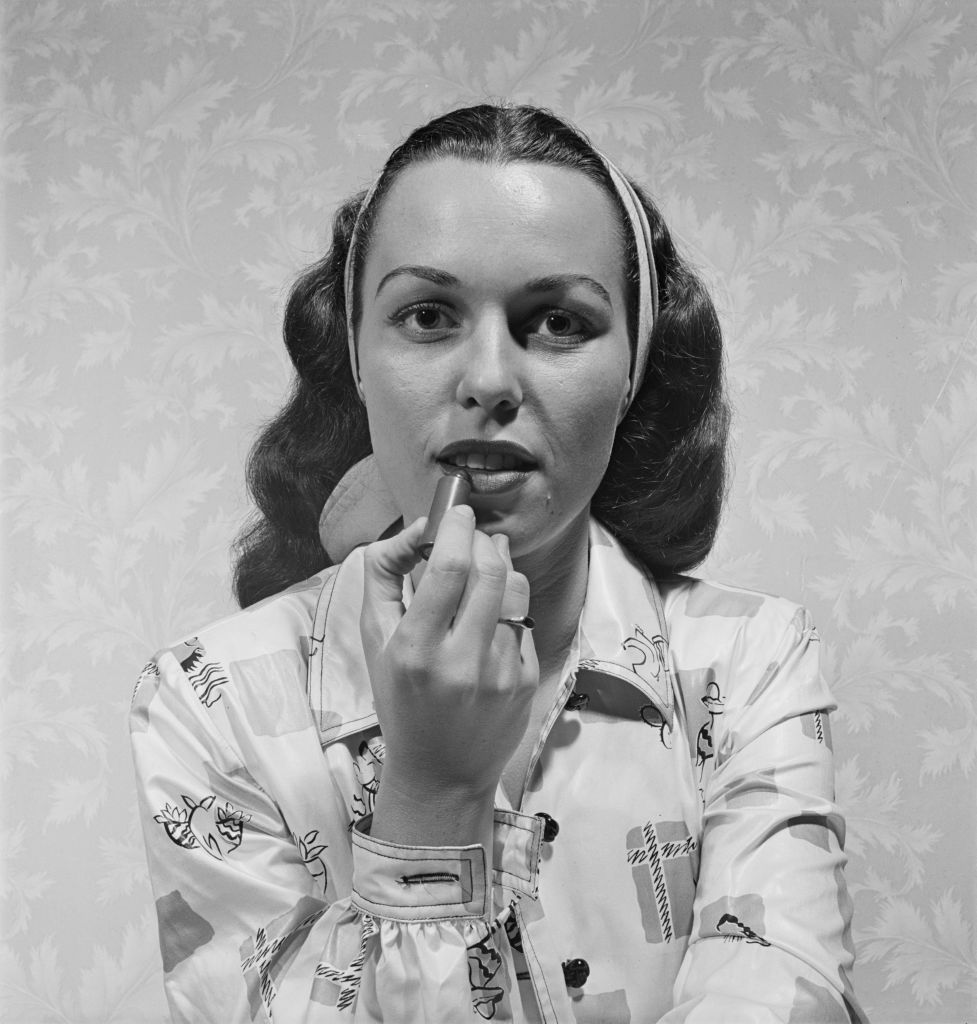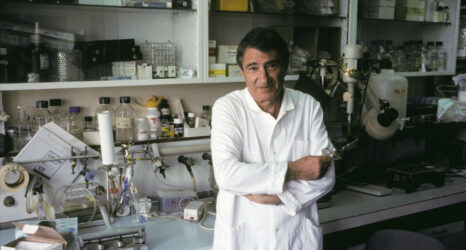“Bessie was not raised to be a beauty queen,” said novelist Linda Kass of Bess Myerson. “She sought to have a voice, to make a difference.”

In early 2020, novelist Linda Kass read an article about Bess Myerson (1924-2014), the 1945 winner of the Miss America pageant.
“My two previous novels, Tasa’s Song and A Ritchie Boy, were set during World War II so I was extremely aware of the cultural milieu at that time,” Kass told Ms. “Her win took place six days after the war ended and just weeks after we’d bombed Japan. The fact that a Jewish woman won the competition for the first—and to date only—time, made me curious about her.”
Kass began reading everything she could find about Myerson. She also began a deep dive into mid-20th-century beauty pageants and the working-class Jewish immigrant community of the Bronx where Myerson was raised.
The result is Bessie—a fascinating historical novel that plumbs the cultural contradictions that impacted Myerson and led her to speak out against both antisemitism and racial bigotry. Bessie was released Sept. 12.
The novel also showcases the launch of Myerson’s long career with the Anti-Defamation League and zeroes in on the gendered expectations of the era. Nuanced, complex and insightful, Bessie offers readers a glimpse into the ambivalence that Myerson felt between her dream of becoming a concert pianist and that of settling into life as a wife and mother.
Kass and Ms. reporter Eleanor J. Bader spoke before Bessie was released.

Eleanor J. Bader: What was most compelling to you about Bess Myerson’s early life?
Linda Kass: Bessie was not raised to be a beauty queen. She sought to have a voice, to make a difference.
Bessie was almost six feet tall by the time she was 12. She was gawky, insecure and considered herself ugly. In middle school, she played Olive Oyl in a school production and Olive Oyl remained in her soul throughout her life. Despite how beautiful she was, she did not think of herself as attractive.
In addition, I wanted to make the Bronx community that raised her come alive. It was an intriguing place. Everyone in her apartment complex, the Sholem Aleichem Cooperative Apartments, was an Eastern European immigrant, most of them from Russia; everyone was Jewish. There were five buildings and they housed many of Bessie’s relatives and family friends. Almost every resident was a musician or artist, a socialist or a communist.
I wanted to stay true to the composition of the community and the touchstones in Bessie’s life. I hope this will give readers a sense of the overcrowded apartment, the social and economic realities she faced as a child, teenager and young adult. Some of the scenes and people are imagined or invented, but Sholem Aleichem was not only real, it was among the few places Jews could live in 1945. A lot of neighborhoods were restricted: “No Blacks, No Jews, No Dogs.”
Bader: Bessie’s mother pushed her three daughters to play the piano. When Bessie took lessons, her non-Jewish teacher was one of the first Christians Bessie encountered. How did this impact her?
Kass: Dorothea LaFollette (1902-1964) was Bessie’s actual piano teacher, and she lived on the Upper West Side of Manhattan, a subway ride away. Dorothea was tall, like Bessie, but graceful and confident, and Bessie revered her. Dorothea made piano playing joyful, unlike Bessie’s mom who was more of a taskmaster, forcing her to practice, practice, practice.
Bessie’s mom wanted her daughters to be able to support themselves and do something prestigious that stayed within the bounds of expected roles.
Antisemitism, racism and sexism were virulent, and homophobia was taken as a given. The arguments voiced then are similar to what we’re hearing and seeing today.
Linda Kass
Bader: Bessie attended the High School of Music and Art which opened in 1936. How did being there impact her outlook?
Kass: The school was the legacy of Mayor Fiorello La Guardia and the students who were accepted were considered the best and brightest in music and art. At graduation Bessie was voted the best-looking girl, with no recognition of her talent. This embarrassed her. Later, she attended Hunter College—which was then free to attend. With most young men off fighting in Europe, she was focused on her studies, her girlfriends, teaching piano and her own musical growth.
Her political consciousness developed over time.
She did not, for example, notice the absence of Black contestants in the Miss America pageant when she first competed.
Bader: Was this also true about her awareness of sexism and gender discrimination?
Kass: At one point Bessie went to hear Antonia Brico (1902-1989), a Dutch-born conductor and pianist. One of the books I read mentioned that seeing Brico opened Bessie’s eyes to what was possible for women. But she also knew, from Dorothea and others, that women had to give up a lot to be professional musicians. Nonetheless, that Brico had made it was potent.
Still, Dorothea taught piano, which is what Bessie’s mother expected her to do. Antonia was a star, but as Bessie got older, she realized that Antonia was an exception, that most women do not get to do what she’d done. At a certain point, when all of Bessie’s friends started to get married, she felt the pull and followed suit. By then, she’d also had enough of the beauty queen role.
Bader: One of Bessie’s big breaks came when amateur photographer John Pape asked her to model for his photography club. The men each contributed a small sum and paid her $5 an hour—then, an exorbitant sum.
Kass: Modeling paid a lot more than teaching piano. Pape and his photography club needed a subject and Bessie was beautiful. The photos he took of her were the ones her sister and Pape submitted to the Miss New York City competition.
Bader: After Bessie won that title, she went on to compete nationally. Lenora Slaughter, the executive director of the Miss America competition, recommended that she change her name to something less Jewish sounding. Why was Bessie so adamant about refusing?
Kass: Bessie’s father had once told her to never forget who she was. She understood this as a mandate to remember that she was descended from Jews who’d survived antisemitism in Russia. She knew that if she changed her name to Betty Merrick, as Slaughter suggested, her family and friends wouldn’t know if she’d been victorious. It took real courage for Bessie to refuse Lenora’s request.
Bader: Class enters the mix when Bessie is told that she has to bring three gowns to the national competition. The price tag was out of reach for her until she found a benefactor.
Kass: Samuel Kass was a designer who was willing to donate three gowns to Bessie. He was being altruistic, but he knew that this was also a way for him to promote his designs and get his name out. I changed his name to Samuel Knapp because I thought it might confuse readers if we had the same surname.
But even with the gowns, Bessie was acutely aware of how different she was. Not only was she the only contestant who’d completed college, she was the only Jew. And unlike the others, her mother had not accompanied her. This proved to be a relief since her mom would have been the only parent who was not U.S. born and Bessie was happy to have her sister with her. But she was intimidated by much of what she encountered.
Bader: Bessie competed in Miss America because the prize was a $5,000 scholarship which she said she planned to use to study music in graduate school. Yet when she won, she bought a baby grand piano, a new flute, and enrolled in a smattering of classes. What happened?
Kass: Bessie’s goals shifted after she won. She was given a chance to play at Carnegie Hall and was aware that had she not been Miss America, she would never have been given that opportunity. She no longer believed she had the skill to be a soloist or composer.
Bader: After Bessie became Miss America, she spent a year on tour and some of the places she went seemed pretty seedy. Was this true?
Kass: Yes. At one of the tour stops, all of the finalists had to get on stage with washed-up vaudevillians. When they were called up, they were identified by their measurements, not their names. It was humiliating and Bessie learned that she would have to work extremely hard to be seen as intelligent. Sadly, she had to satisfy pageant sponsors, but the experience raised her social consciousness and, increasingly, she wanted to do something significant. This is why she liked visiting patients in the country’s veteran’s hospitals.
Bader: During her reign she met Arnold Forster at the Anti-Defamation League and began working as an ADL spokesperson. How did that evolve?
Kass: The ADL was formed after the mob lynching of Leo Frank, a Jewish factory worker who’d been convicted of murdering a 13-year-old girl. He was kidnapped from prison and killed in 1915, likely by the Ku Klux Klan. Most authorities now agree that Frank was innocent.
Bessie met Forster through her sister’s boyfriend. The ADL’s Brotherhood Campaign used the tagline, “You Can’t Be Beautiful and Hate.” Bessie’s speeches linked antisemitism with other forms of bigotry and the campaign took her to every corner of the country.
Bader: Let’s switch gears. You mentioned your research earlier. What texts were most helpful to you in constructing Bessie’s early life?
Kass: Victory City: A History of New York and New Yorkers by John Straughbaugh, was wonderful and well-written. Another book, published in 1964, that really helped was Accent on Talent: New York’s High School of Music and Art by Benjamin Morris Steigman.
I read a lot of articles about Miss America, too, and an authorized biography of Myerson by Susan Dworkin called Miss America,1945: Bess Myerson and the Year that Changed Our Lives. Dworkin’s book included a lot of direct quotes from Myerson which helped me imagine how she spoke, saw the world, and reacted.
Bader: Racism, sexism, homophobia, transphobia and antisemitism are now surging. Do you see Bessie as a rebuttal?
Kass: It’s awful that this story is so relevant. In the 1930s and ’40s, American hostility toward Jews was high, but by 1945, the Nazis had been defeated. Nonetheless, antisemitism, racism and sexism were virulent, and homophobia was taken as a given. The arguments voiced then are similar to what we’re hearing and seeing today. Robert Bowers went into Pittsburgh’s Tree of Life Synagogue in 2018 because he wanted to kill Jews. He murdered 11. Payton Gendron went to a Buffalo, New York supermarket in 2022 to kill Black people; he murdered 10. It boggles the mind.
The work Myerson did with the ADL continues and their agenda includes countering antisemitism and fighting for gender, LGBTQIA+ and racial justice. I hope people will be inspired by BESSIE and commit to resisting hatred and discrimination in every form.
Up next:
U.S. democracy is at a dangerous inflection point—from the demise of abortion rights, to a lack of pay equity and parental leave, to skyrocketing maternal mortality, and attacks on trans health. Left unchecked, these crises will lead to wider gaps in political participation and representation. For 50 years, Ms. has been forging feminist journalism—reporting, rebelling and truth-telling from the front-lines, championing the Equal Rights Amendment, and centering the stories of those most impacted. With all that’s at stake for equality, we are redoubling our commitment for the next 50 years. In turn, we need your help, Support Ms. today with a donation—any amount that is meaningful to you. For as little as $5 each month, you’ll receive the print magazine along with our e-newsletters, action alerts, and invitations to Ms. Studios events and podcasts. We are grateful for your loyalty and ferocity.





